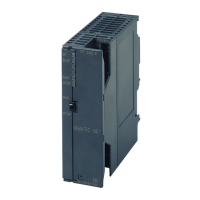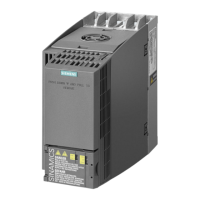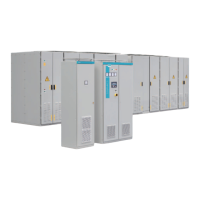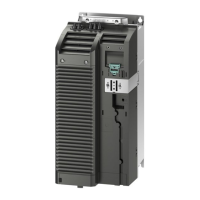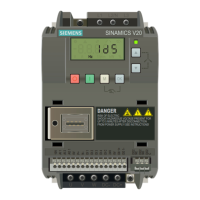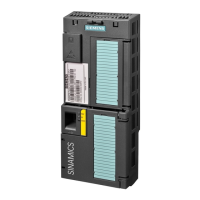06.2005 Engineering Information
Siemens AG 6SE7087-6QX70 (Version AE)
SIMOVERT MASTERDRIVES Compendium Motion Control 11-37
Selection in relation to the dynamic limit curve
♦ The max. motor torque here occurs during acceleration upwards
since the deceleration is equal to the acceleration and the drive,
during lifting, also has to overcome the levels of efficiency.
M
Mot max
=++ +⋅
⋅⋅
MMM M
i
bMot
bG
b Load H
mech
G
()
1
ηη
=+++⋅
⋅⋅
=+MMNm
b Mot b Mot
05 25 981
1
10 09 095
14 9.( .)
..
.
with
MJ iJ J s
b Mot Mot Load Mot Mot
=⋅ ⋅=⋅⋅=⋅
−
α 50 10 500
2
The first 1FT6 motor with n
n
=3000 rpm, which satisfies the condition
or matches the dynamic limit curve, is the 1FT6082-8AF7 with
P
n
=3.2 kW, M
n
=10.3 Nm, M
max perm
=42 Nm, J
Mot
=0.00335 kgm
2
(with brake), k
Tn100
=1.18 Nm/A, η
Mot
=0.89, M
0
=13 Nm
♦ The acceleration and deceleration torque for the motor rotor is thus
MNm
b v Mot,
..=⋅=0 00335 500 168
♦ The max. motor torque is equal to the motor torque during
acceleration:
MM Nm
Mot Mot b upmax
...==+=168 149 16 58
M/Nm
M
Mot max
n/min
-1
n
Mot max
45
40
35
30
25
10
0
1000 2000 30001500 2500
500
5
15
20
Fig. 11-19 Fig. 11-19 Dynamic limit curve for the 1FT6082-8AF7 with the points
of the load cycle
In order to check the thermal limits, the effective motor torque is
calculated. For this purpose, all other motor torques within the travel
curve have to be calculated, in addition to the motor torque during
acceleration.
4. Selection of
motor

